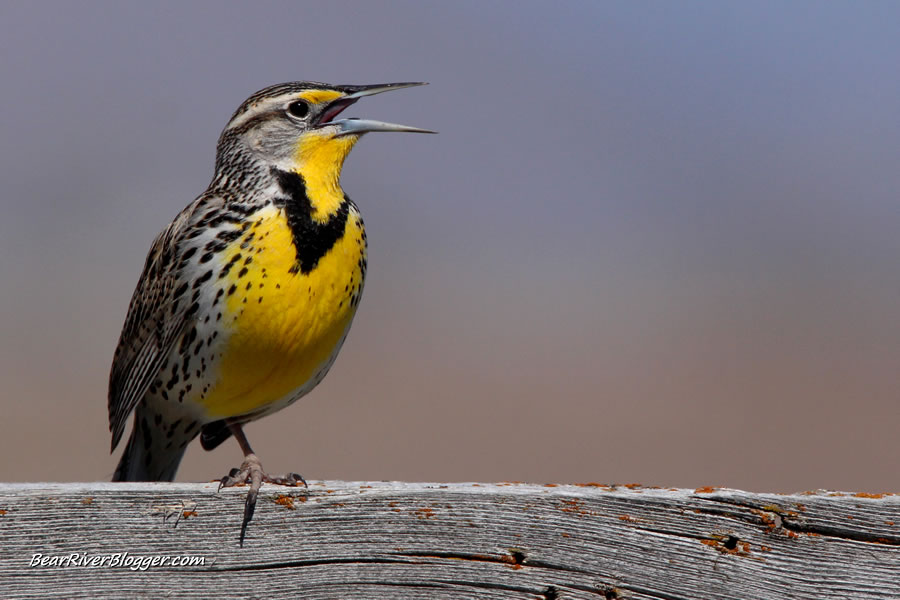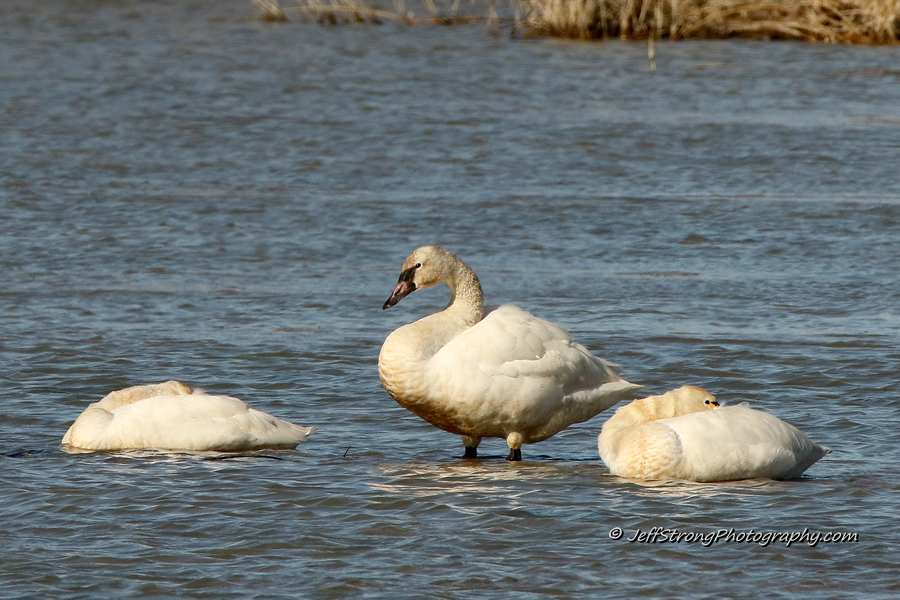Let’s talk spring bird watching on the Bear River Migratory Bird Refuge for a moment.
Without a doubt, today was the most active bird-wise I have seen the Bear River Migratory Bird Refuge auto tour route since last year when fall migration was in full swing.
Spring migration is starting to pick up a little steam now as a few new bird species for the year were seen today on the refuge.
Tundra Swan
Unfortunately, however, one very popular and sought-after bird species, in particular, the tundra swan, seems to have migrated out a bit earlier this year, most likely due to the warm, dry season we are having as today was just a couple degrees short of hitting 80.
Trust me, that is quite a bit north of the mid 50’s we are supposed to be having for the high temperatures this time of year.
I was up by the Bear River Bird Refuge looking for snow geese yesterday evening and while doing so, watched large flock after large flock of tundra swans flying by northward in the traditional v-shape just as the sun was kissing the horizon good night.
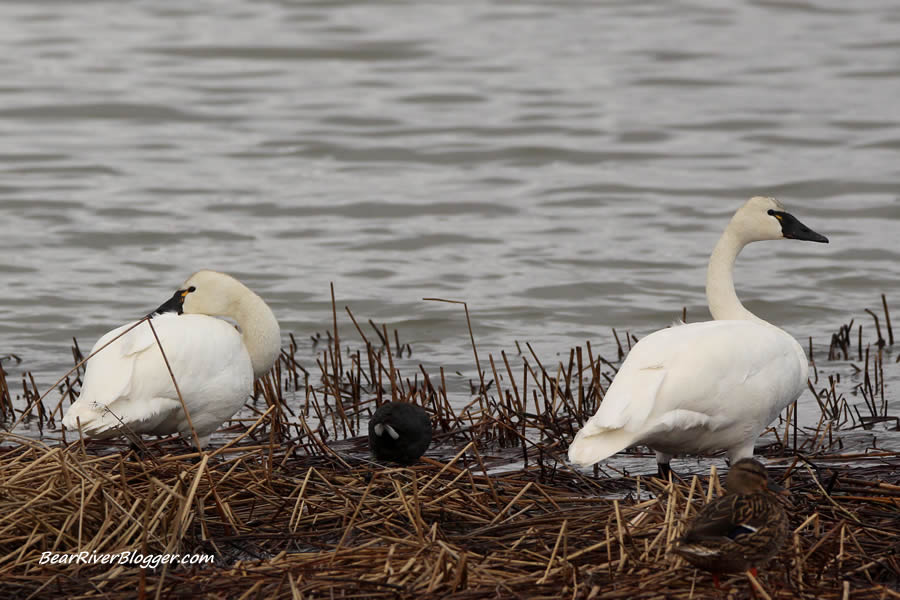
Today, while birding on the refuge auto tour route, not one single tundra swan was found so I am certain what I witnessed last night was the miracle of bird migration in action as the swans headed out for their next stop on the way to Alaska and the arctic tundra for the summer breeding season.
It might not be well known but tundra swans and many other birds, in fact, do migrate during the night.
There could be thousands of swans present one day and not a single bird the very next morning, a natural phenomenon I have seen countless times out bird watching during both spring and fall migration with both the tundra swans and snow geese that come through the Bear River Migratory Bird Refuge each year.
Burrowing Owl
For those of you anxious to find burrowing owls this summer, I have good news, I saw the first burrowing owl on Forest Street today heading down to the auto tour route.
Last year, a pair of burrowing owls have been observed nesting on the upper part of Forest Street near the first cattle guard and it looks like they might be back again for another breeding season.
The burrowing owls that have nested in this particular location are not officially on Bear River Migratory Bird Refuge property itself but are on private lands adjacent to the federal refuge.
Keep your eye out on the west side of Forest Street as you come to the first cattle guard and you might see one sitting in the short grass or on a fence post.

Please remember, however, the birds are on private property so never, ever try and approach them by trespassing on private land.
Doing such is disrespectful to the landowner and could also disrupt any breeding activity for the owls as well.
Stay on the public domain roadway and enjoy the birds from there.
These particular burrowing owls are usually in pretty good view from the roadway so there really is no need to get any closer anyways, just be respectful as well as safe and watch the traffic on Forest Street as there is not much of a shoulder to pull completely off of the county road.
American Avocet
I have seen American avocets since late February 45 miles to the south on Farmington Bay but today was the first day I have seen these quirky little birds on the Bear River Migratory Bird Refuge this spring.
The Great Salt Lake wetlands, including the Bear River Bird Refuge, is an important portion of breeding habitat for the American avocet as they come to these wetlands each year specifically to breed.
This is a summer bird that offers some great bird watching and photography on the refuge, especially if you are lucky enough to catch them when the chicks are hatching and traversing nearby the auto tour gravel road.
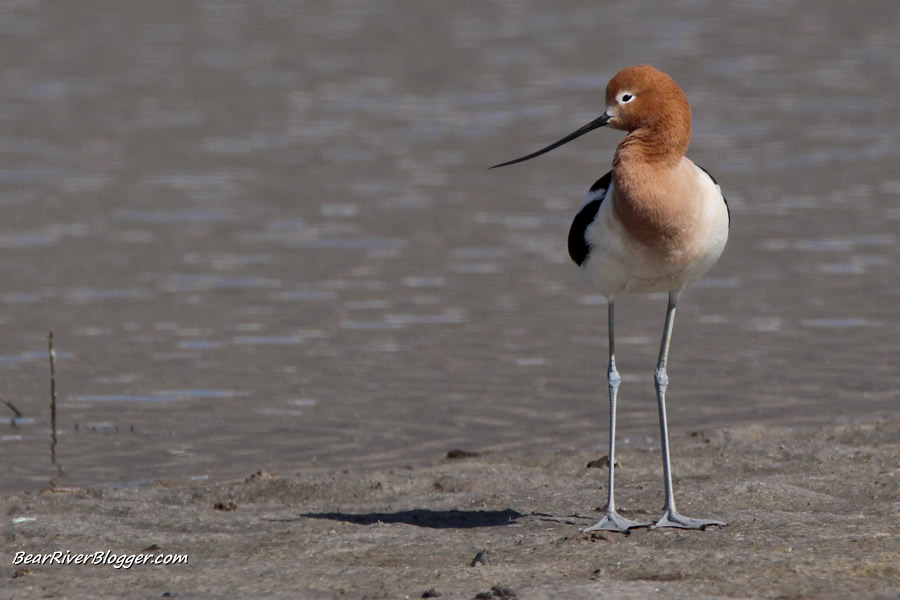
Yellow-headed Blackbird
I’m going to admit the yellow-headed blackbird has one of the coarsest vocalizations in the bird world but one I absolutely miss during wintertime.
Today, I came across a couple flocks of yellow-headed blackbirds on the refuge auto loop so they are now just starting to show up.
As spring progresses, the large groups of blackbirds will disperse a bit and both individual and small groups can easily be seen all around the refuge auto tour route squawking and squalling with one another over their nesting territories.

I have yet to see any yellow-headed blackbirds yet anywhere else this spring, including Farmington Bay, but it won’t be long before they will be filling the airways with their coarse caterwauling for the summer.
So keep your eyes out and your ears open as this is the time of year for the yellow-headed blackbird to once again return to the wetlands of northern Utah.
Clark’s Grebe
Another summertime bird that is quite popular to view and photograph during the brooding season is the Clark’s grebe.
This interesting water bird, one with plumage very similar to the western grebe, has now officially made its annual appearance on the Bear River Migratory Bird Refuge auto tour route.

Today was my first Clark’s grebe sighting for the season, which means the western grebe is close at hand if they aren’t already here as well since the two grebe species are visually quite similar at a distance.
Probably one of the most sought out scenes on the refuge during the summer is the baby-on-board sightings of parents slowly gliding across the refuge waters with one, two, and sometimes three small baby grebe chicks contently riding on the parent’s backs.
From my personal experience, the best place to find grebes during the summer on the Bear River Migratory Bird Refuge, both Clark’s and western varieties, with baby-on-board is on the south and southeast portions of the auto tour route.
Occasionally, I also find them on the canal on the west side of the auto tour route road as you head back north to the main parking lot on the east section of the loop.
This particular spot is actually the best location to photograph the grebes if you are fortunate to find them there as the wall of phragmites keeps the birds in the canal and also adds a nice backdrop for pictures.
Red-winged Blackbird
Red-winged blackbirds are quite common on the Bear River Migratory Bird Refuge year-round so you might be wondering why I included this particular bird species as being new and just showing up for the year on the refuge.
Well, to be honest, even though the male red-winged blackbirds do indeed stay on and around the Bear River Bird Refuge during winter, the female blackbirds just disappear for the season and are now just returning to the refuge from an unknown wintering location.
Keep your eye out during winter and you will only find the male blackbirds with their red scapulars flying around the auto tour route in large flocks but the females are not present for some reason.
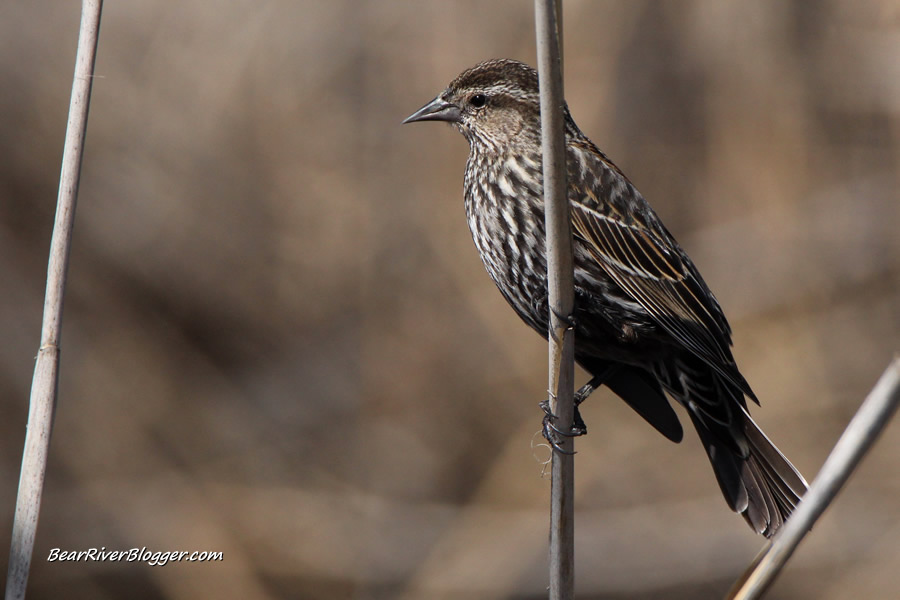
I am not sure where the female blackbirds disperse to if they do indeed migrate south or just traverse in groups to another locale but for some strange reason the two genders separate for the winter with the males staying put on the refuge and the females going elsewhere.
If anybody has any insight into where the female blackbirds go during the winter please give me a shout, I am interested in finding out the answer to this mystery.
Toads
Even though it’s not a migratory bird, I just had to include this little fella from today’s trip in this blog post.
I am not very well versed in amphibians so if anybody knows what kind of toad this is, please let me know.

I occasionally see toads during the spring, much like this one from today, but they aren’t too often seen on the auto tour route from my experience.
This little guy was only 2 inches long so they are hard to find on the refuge but I got lucky today as he caught my eye hopping across the auto tour route road.
Spring Bird Watching On The Bear River Migratory Bird Refuge
Spring is one of the most pleasant times to visit the Bear River Migratory Bird Refuge for some bird watching.
Numerous new bird species are constantly returning and there are no pesky mosquitoes or horseflies to worry about yet.
Typically, the tundra swans are peaking in numbers by mid-March but this year they migrated out a bit early.
I find mornings on a weekday is usually the best time to visit the Bear River Migratory Bird Refuge for some birding as the crowds are smaller than they are on a weekend.
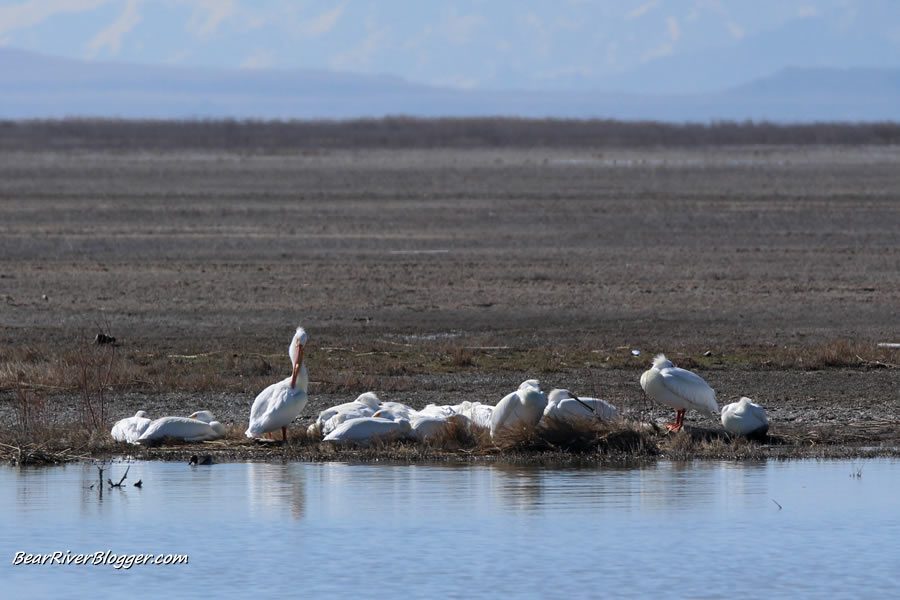
Drive the auto tour route slowly and listen and well as watch for birds along the way.
Birds such as marsh wrens, song sparrows, for example, are oftentimes heard before they are seen.
The auto tour route posted speed limit is 25 mph, but honestly, that is much too fast for bird watching if you are wanting to find many of the smaller birds on the refuge auto loop.
I always plan on a couple of hours on the refuge auto loop, sometimes even longer if it is a good day of bird watching.
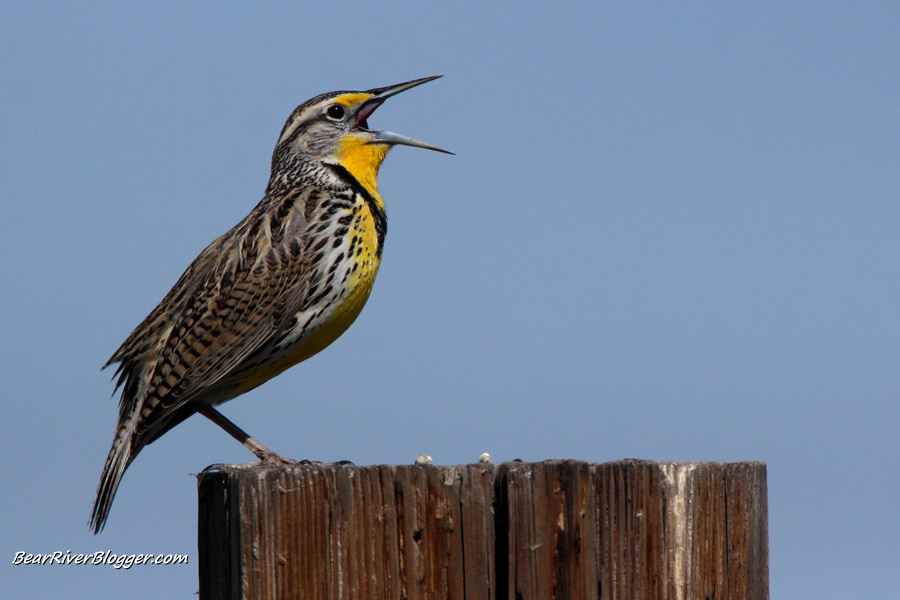
Somedays, especially when the birds seem to be at every turn, I have been known to go around the 12-mile loop a second time.
I never get tired of bird watching on the Bear River Migratory Bird Refuge and that is why I started this blog, hoping to help other bird watchers enjoy it as much as I do.
Bird T-shirts
Western Meadowlark T-shirt, available in a variety of colors and styles. Visit our online store for more information or to make a purchase, and use coupon code save20 for 20% off all our products for a limited time.
Every purchase you make helps keep this website going and we appreciate your support for our time and effort for blogging about nature on and off of the Bear River Migratory Bird Refuge.

Subscribe To Bear River Blogger
Don’t forget to head on over to our subscribe page and sign up for email notifications for future blog posts.
We appreciate your support for our website and also offer you to follow us on our YouTube channel where we occasionally upload short videos updates about the Bear River Migratory Bird Refuge and small nature clips when we can capture them on film.

